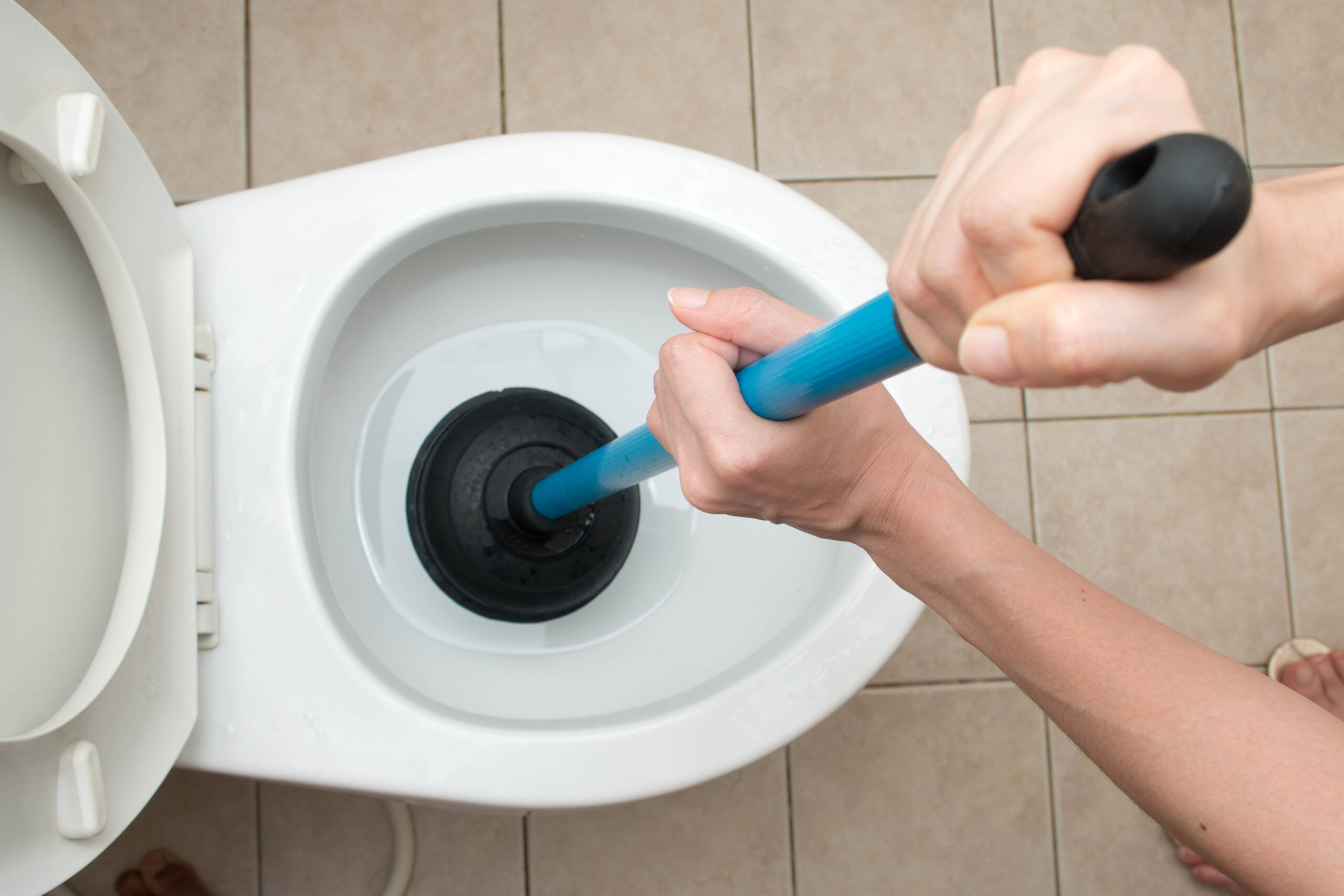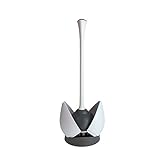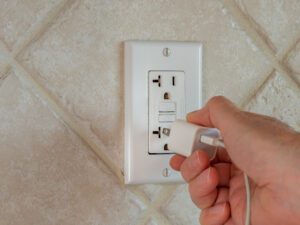To unclog a toilet effectively, start with a reverse plunge using a flange plunger. Gently push down to expel air and create a seal, then forcefully pull up without breaking the seal. This technique can help dislodge the clog. If unsuccessful, use a toilet auger to reach deeper blockages. Regular maintenance and avoiding flushing non-flushable items can prevent future clogs. For persistent or severe clogs, consider calling a professional plumber.
Most of us think that just sticking the plunger in the bowl and firmly plunging up and down is how you unclog a toilet. But is that the best way? In most cases it will work, but in some cases, initially just plunging up and down could make the clog worse. Follow along in this post and let me explain why, and how to attack toilet clogs the right way.
Knowing how to unclog unclog a toilet the right way can eliminate a panic attack when this inevitably happens, and it will happen if you own a home. This common household issue can indeed be a crappy task (sorry, couldn’t resist), especially when you’re unsure of the correct steps to take.
What Causes Toilet Clogs?
We all know this, but it’s worth re-stating it here. Toilet clogs are a common household issue that can be caused by a number of factors. One primary cause is the disposal of non-flushable items such as baby wipes, feminine hygiene products, or thick paper towels. These items do not disintegrate like toilet paper and can easily cause a blockage.
The most common cause is excessive use of toilet paper. While toilet paper is designed to break down in water, using too much at once can lead to a clog. The same applies to the disposal of grease and oil down the toilet. These substances can solidify in the pipes, leading to a blockage.
- Tree roots can also cause toilet clogs. They can infiltrate sewer lines, causing obstructions and disrupting the flow of waste.
Lastly, poor plumbing design can contribute to toilet clogs. If the pipes are not correctly sloped, it can prevent waste from flowing smoothly, leading to clogs. Probably not the problem, but still worth mentioning.
Knowing the causes of toilet clogs can help in preventing them. However, if a clog does occur, understanding the cause can assist in determining the best method for unclogging the toilet. It’s always important to remember that if a clog is severe or persistent after following the steps in this post, it might be time to call in a plumber.
Use The Right Type Of Plunger
There are several different types of plungers for different tasks. The first step in unclogging a toilet is to choose the right type of plunger. For toilets, a flange or funnel-cup plunger is most effective. It has an extended rubber flap (or Flange) that fits well into the toilet drain, creating a strong suction to dislodge the clog.
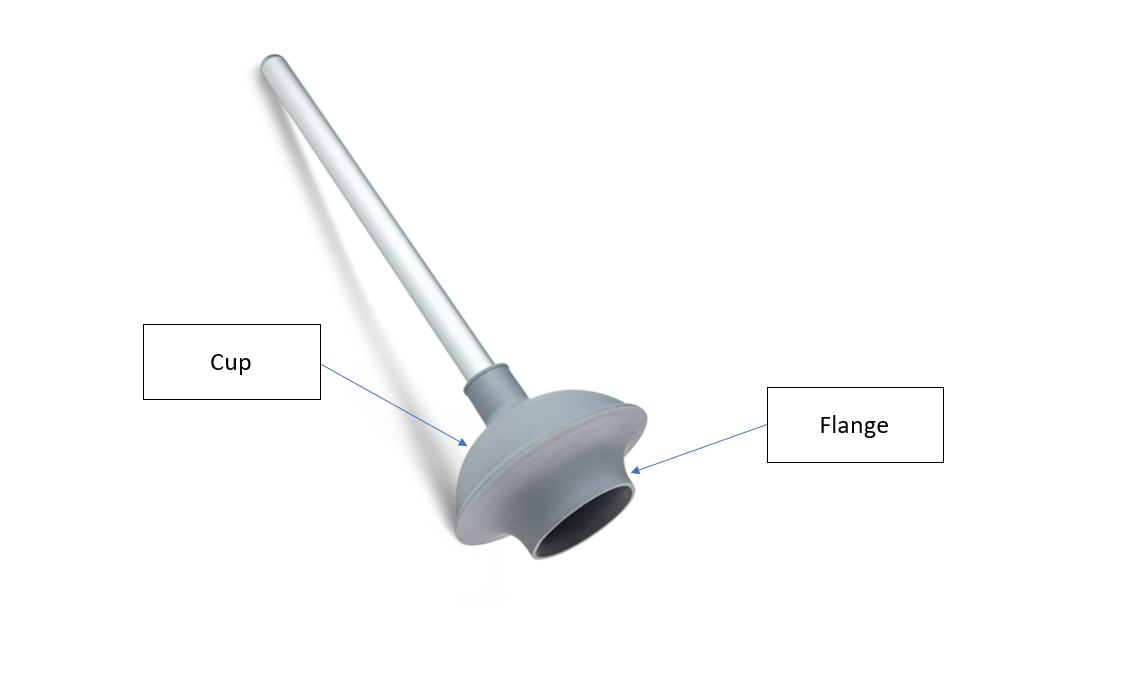
Reverse Plunge First!
Pro Tip From John: You may not have heard this advice, but it works! Insert the plunger into the bowl so the flange extends into the entrance of the trapway of the toilet (see pic below). Push down gently and SLOWLY on the plunger to expel air and create a seal. Then, forcefully PULL UP first without breaking the seal. Don’t go back and forth initially. Repeat this a few times after slowly and gently compressing the plunger so you don’t compress the clog. By doing this, you have a good chance of pulling the clog back up into the bowl where you can break it up, then plunge it down. After doing this a few times, if you don’t see any clog in the main bowl, then start firmly plunging down and up until you push the plug through.
Why Reverse Plunge? If you look at the picture below, you can see that the entrance to the trapway on the toilet is typically larger than the exit. If the plug is substantial, trying to “push” the plug through could pack it in even tighter, making removal more difficult. In most cases, the normal method of pushing and pulling on the plunger will break up most clogs, but doing a “REVERSE PLUNGE” first a few times is always a good idea.
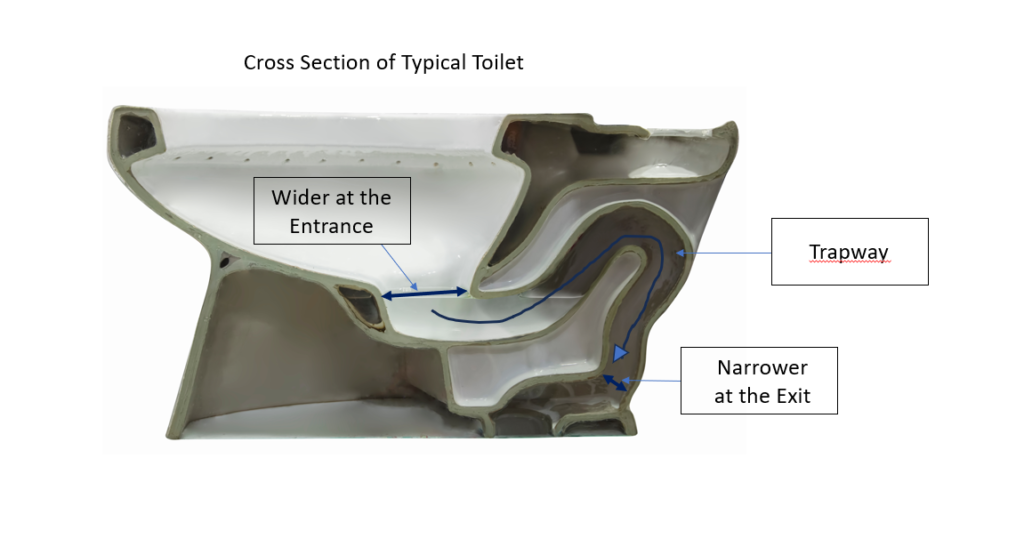
Remember, patience is key. It might take several attempts to unclog the toilet. If the water starts draining, you’ve successfully unclogged the toilet. If not, repeat the process.
In some cases, a plunger might not be enough. If you’re dealing with a stubborn clog, it might be time to move to the next step and try a Toilet Auger, also know as a closet auger.
Closet Auger – The Next Step.
When it comes to unclogging more difficult plugs in a toilet, a toilet auger is the next most obvious option. Our Friend Skye from TLC plumbing in the video below says you should never use a plunger. I don’t agree with this as a plunger is almost always the fastest, easiest and cheapest way to clear most clogs.
However, he does a great job at describing how a closet auger works. This handy tool is specifically designed to navigate the twists and turns of your toilet drain. Unlike a plunger, it can reach blockages that are further down the pipe, making it a more effective solution for stubborn clogs.
A toilet auger features a long, flexible shaft with a crank on one end and a corkscrew tip on the other. By turning the crank, the corkscrew tip burrows into the clog, breaking it up or pulling it out. This direct approach to tackling toilet clogs can save you the time and expense of calling a professional plumber.
When using a toilet auger, it’s important to proceed with caution to avoid damaging the porcelain. Insert the auger into the bowl with the protective sleeve in place, then slowly turn the crank while applying gentle pressure. This method ensures that the auger reaches the clog without scratching the toilet bowl.
Despite its effectiveness, a toilet auger isn’t a one-size-fits-all solution. It’s most effective for clogs located within the toilet itself, rather than those further down the sewer line. For more complex clogging issues, it may still be necessary to call in a professional. However, for most common toilet clogs, the toilet auger is an effective and affordable tool. Here’s a few to choose from and their respective prices.
| DrainX 6 Foot Toilet Auger | RIDGID Toilet Snake Auger |
|---|---|
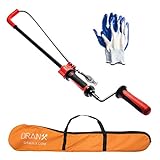 |
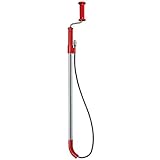 |
| $76.37* | $90.50* |
| Check Price on Amazon | Check Price on Amazon |
* Price at the time this post was written
How to Prevent Toilet Clogs?
Preventing toilet clogs begins with understanding what should and should not be flushed. Only human waste and toilet paper are designed to disintegrate and move smoothly through the plumbing system. Avoid flushing items such as paper towels, wipes (even those labeled as ‘flushable’), feminine hygiene products, or diapers. These can easily cause a toilet clog and disrupt your home’s plumbing.
Implementing a regular cleaning routine can also help prevent clogs. Using a plunger every few weeks can dislodge any potential blockages before they become a problem. Additionally, consider using a toilet brush to clean around the bowl and under the rim where clogs can start.
Regular maintenance is another key aspect in preventing toilet clogs. If the toilet is old or has recurring issues, it may be worth investing in a new, more efficient model. A professional plumber can also provide periodic inspections to ensure everything is running smoothly.
Another useful tip is to educate everyone in the household about proper toilet use and what can and cannot be flushed. This is especially important for children who may be tempted to flush toys or other inappropriate items.
Lastly, always keep a high-quality toilet plunger on hand. While this won’t prevent clogs, it can help you address the problem quickly and effectively when it does occur, reducing the risk of overflow and further damage.
We have this one from Chlorox. I like it as it has a hosing that holds the plunger and prevents water from dripping on the floor after use. Click on the picture to check it’s price on Amazon.
Remember, preventing a toilet clog is always easier and more cost-effective than dealing with one. By following these simple steps, you can keep your toilet running smoothly and avoid the hassle and expense of a blocked pipe.
What Not to Flush Down Toilets?
To prevent a clogged toilet, it’s critical to be aware of what you should not flush. Items like paper towels and cotton balls are not designed to break down in water as toilet paper does. They can easily lead to blockages. Similarly, diapers and sanitary products are too bulky and can cause serious clogs.
Flushable wipes are another common culprit. Despite their name, these wipes do not disintegrate quickly enough and can cause a build-up in the pipes. Even excessive amounts of toilet paper can be problematic. Always remember to use only what’s necessary.
Non-degradable items like plastic wrappers and dental floss should never be flushed. They can linger in the system, leading to significant blockages over time. Also, avoid flushing hair as it can easily tangle and create stubborn clogs.
Food waste and grease are also not meant for the toilet. They can solidify and cause blockages. Even small items like chewing gum can stick to pipes and cause problems.
It’s also important to remember that medicines should not be flushed. They can contaminate water supplies and harm the environment.
By being mindful of what you flush, you can prevent unnecessary clogs and maintain a well-functioning toilet.
Are All Toilet Clogs the Same?
Not all toilet clogs are the same, contrary to popular belief. Various factors can cause toilet clogs, and understanding these can help in effectively addressing the issue.
Firstly, foreign objects are a common cause of clogs. Kids’ toys, sanitary napkins, or even excessive amounts of toilet paper can block the passage, causing a clog. Secondly, low-flow toilets, especially older models, often experience clogs due to their less powerful flush.
Another common cause is plumbing issues. Problems like a blocked plumbing vent or issues in the main sewer line often result in toilet clogs. Lastly, certain types of toilet paper do not dissolve easily, leading to frequent clogs.
1. Foreign objects: Toys, sanitary napkins, excessive toilet paper
2. Low-flow toilets: Older models with less powerful flush
3. Plumbing issues: Blocked plumbing vent, issues in the main sewer line
4. Toilet paper: Certain types that do not dissolve easily
Knowing the cause helps in applying the most effective unclogging method. For instance, a plunger might work for a simple clog, but a sewer line issue might require professional assistance. So, remember, not all toilet clogs are the same, and neither are their solutions.
When to Call a Plumber?
Even if you’re a DIY enthusiast, there are instances when it’s best to call a professional plumber to unclog a toilet when a plunger or a plumber’s snake doesn’t work. If you’ve tried these tools and the clog persists, it’s time to call a professional.
Another scenario is when you notice water seeping from the base of the toilet. This could indicate a more serious problem like a broken seal. Trying to fix this on your own could lead to water damage or a worse blockage.
Lastly, if you’re experiencing frequent clogs, it’s a sign of a deeper issue. It could be a problem with the sewer line or septic system. In such cases, a professional plumber can diagnose and fix the problem efficiently.
Remember, attempting to fix a severe clog on your own could lead to more damage and higher costs in the long run. It’s always best to call a professional when:
- A plunger or plumber’s snake doesn’t work
- Water is seeping from the base of the toilet
- You’re experiencing frequent clogs
While it’s admirable to handle minor plumbing issues on your own, knowing when to call a plumber can save you time, money, and a lot of unnecessary stress.
Wrapping Up: How to Unclog a Toilet
Understanding how to unclog a toilet effectively is a important skill for every homeowner. We’ve explored the common causes of toilet clogs and how to use a plunger correctly to resolve them. We’ve also delved into the effectiveness of toilet augers, and their role in solving this household problem.
Preventing toilet clogs is another key area we’ve discussed. We’ve highlighted the importance of knowing what should and shouldn’t be flushed down toilets, emphasizing that not all toilet clogs are the same. Some can be resolved with a simple plunger, while others might require the expertise of a plumber.
It’s essential to know when to call a professional, as some clogs can indicate a more serious underlying issue. In the future, advancements in toilet designs and waste disposal systems may reduce the occurrence of clogs. However, until then, the knowledge and tips shared in this post will continue to be vital. Remember, prevention is always better than cure, so proper toilet usage and regular maintenance are crucial to avoid the unpleasant experience of a clogged toilet.
Home Owner Essentials!
Please check out our post on Homeowner Essentials, Common Sense Tips All Homeowners should know. While this is one task all homeowners should know how to do correctly, there are many more common sense tips in this post.
Good Luck
John

